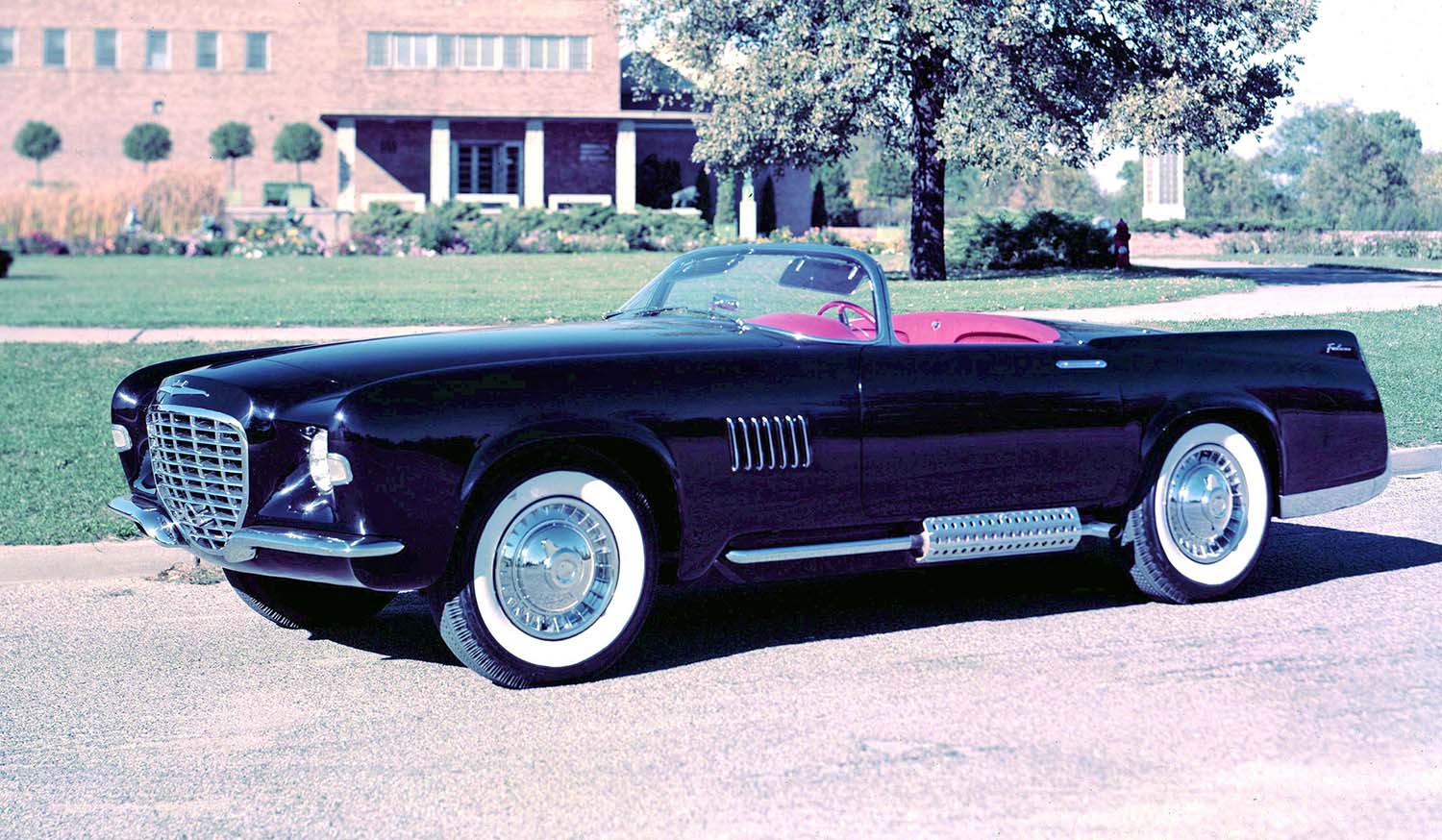
Imagine a time when American manufacturers were battling over the idea of a two-seat sports car. Chevrolet had the Corvette, and Ford quickly introduced the Thunderbird. Now, picture Chrysler’s response: a vehicle that combined raw American power with the sleek, hand-built artistry of an Italian coachbuilder. That striking machine was the 1955 Chrysler Falcon concept, a piece of history that remains incredibly significant. It truly represented a high-performance dream, showcasing what Chrysler’s Forward Look design era could achieve. This particular concept car, unfortunately, never made it to full production.
A Transatlantic Design Partnership
The story of the 1955 Chrysler Falcon concept begins with visionary designer Virgil Exner. He was determined to shed Chrysler’s reputation for conservative, upright styling and commissioned a series of “Idea Cars.” The Falcon was one of the most stunning results of this push. Exner supplied the plans, but the actual bodywork was crafted by Carrozzeria Ghia in Turin, Italy. This transatlantic collaboration was common for Chrysler at the time. Therefore, the Falcon is a unique blend of muscular Detroit engineering and exquisite European craftsmanship.
Stylistic Elements That Defined an Era
The design of the 1955 Chrysler Falcon concept was pure 1950s drama, yet still refined. It featured a dynamic long hood and a short rear deck profile, a classic sports car silhouette. The body was low-slung and wide, giving it a commanding and stable presence on the road. Up front, you can see a distinctive egg-crate grille, which later became a hallmark of the successful Chrysler 300 series. Details like simulated knock-off wire wheels and exposed external side-exhaust pipes gave the roadster a truly racier appearance.
The Influence of the 1955 Chrysler Falcon concept
Even though Chrysler decided against mass-producing the Falcon, its impact on the brand was undeniable. Many of its advanced styling cues were quickly integrated into production vehicles. The Falcon’s design language contributed heavily to the shift that became known as Exner’s famous “Forward Look.” This design direction rescued Chrysler from a sales slump and defined its aesthetics throughout the mid-to-late 1950s. Consequently, the brief existence of the 1955 Chrysler Falcon concept influenced countless cars that did reach the showroom floor.
Power and Performance
The 1955 Chrysler Falcon concept was built on a modified Chrysler C-300 platform, and it delivered performance to match its bold looks. It featured a version of the first-generation Chrysler Hemi V8 engine. Some examples used a De Soto 276 cubic-inch FireDome Hemi, which was rated at 170 horsepower. The most famous surviving example, however, rides on a shortened C-300 chassis. That car uses a potent 331 cubic-inch FirePower HEMI V8 engine. This powerful motor was paired with a two-speed PowerFlite automatic transmission. The car weighed around 3,300 pounds, and contemporary road tests suggested a top speed over 110 mph. It truly was a high-speed road car.
A Rarity That Sparked the Imagination
Only a handful of these beautiful concepts were ever built by Ghia, possibly just three cars. The scarcity of the 1955 Chrysler Falcon concept only adds to its legendary status among collectors. In fact, a few examples were reportedly shipped out of the United States. This unusual move is what likely saved them from the corporate crusher, a common fate for concept cars back then. Today, the surviving examples are considered priceless automotive artifacts. They represent a daring era when American designers pushed boundaries, creating rolling works of art.
Disclaimer: Content on this site is for informational purposes only. Vehicle specs, pricing, and availability may change. Always verify details with official sources before making decisions. Opinions are those of the authors.
Source: Stellantis
